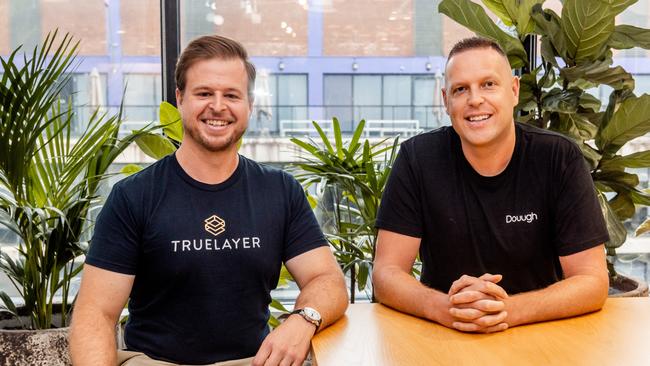Local open banking regime must get scale before other sectors are added: TrueLayer chief Brenton Charnley
Australia needs to focus on getting the open banking regime working at scale before rolling out the Consumer Data Right to other areas including energy.

Australia needs to focus on getting the open banking regime working at scale before rolling out the Consumer Data Right to energy and telecommunications.
That’s the view of TrueLayer’s Australia and New Zealand chief Brenton Charnley, who believes this market will probably mirror Britain’s experience of open banking, where take-up was slow in the initial three years before it ramped up in the past two years.
Open banking via the CDR gives customers more control of their data, does away with controversial screen-scraping methods and makes it easier and more secure to switch banks or financial services providers.
TrueLayer is a payments and open banking platform that counts payments group Stripe, technology giant Tencent and Singapore’s Temasek as investors.
The local open banking regime is into its second year. The sharing of energy data is due to start in November and the telecommunications and open finance sectors are next cabs off the rank.
Mr Charnley said the UK had passed five million users of open banking and he suspected Australia had just tens of thousands of users. “We need to finish banking first. The fact that energy is next, telcos, super … they have yet to see the consumer demand from people asking for switching of these products, they’re highly complex,” he told The Australian.
“We’ll see success with the consumer data, if we can focus more on banking and finance as opposed to trying to go broad.”
Mr Charnley’s comments come as TrueLayer on Monday announced a partnership with ASX-listed Douugh. It sees Douugh get access to open banking data via TrueLayer, representing the firm’s first mobile-banking customer in Australia.
Douugh – which plans to roll out its mobile banking and personal financial management app in Australia in the second half of the year – is predominantly operating in the US. Total customers on its platform amounted to almost 92,000 in January, and it has a wait list of thousands ahead of the Australian launch.
Digital banks and fintech players are jostling to build scale in the domestic market, after a round of rationalisation saw banks buy 86 400 and Up. SocietyOne agreed to be taken over by MoneyMe, and Latitude is acquiring Humm’s consumer arm.
Financial Services Minister Jane Hume last week lauded the open banking regime’s “intense upfront build phase”, and said benefits to consumers would start being felt across the economy.
“There is already a strong flow of CDR data in the banking sector where consumers can use their personal data to switch banks, take out a loan, apply for a new mortgage or add new financial management tools like budgeting apps to their armoury,” she said.
Senator Hume – who flagged a formal review of open banking that would be completed by July – is optimistic on the CDR rollout.
“Eventually the dashboard on my phone will give me the right insight to switch power providers, show me how to finance installation if I opt for rooftop solar power, and how to insure it. All based on my usage, my preferences, my data,” she said. “It will be seamless, and cost-efficient.”
Mr Charnley said he believed there was “pent-up demand” for open banking use in Australia, which would lead to significant take-up over the coming years.
Big banks are also lifting their game to attempt to stem any customer attrition from open banking, with the four majors all improving services and functionality. Commonwealth Bank is integrating functionality onto its app and is working with partners in crypto and retail deals to ensure customers remain sticky.
Douugh – which was founded in 2016 and is loss making – is building what it calls a “super app” enabling functionality including automated budgeting, bill management, cash back, early access to pay and share trading.
It has partnered with Chicago-based Zero Hash for a crypto wallet and trading, while in Australia it is drawing on Railsbank and Volt for banking services.
Douugh chief executive Andy Taylor said becoming a CDR data recipient was important, and said he believed major banks would find it difficult to execute improvement plans for their apps.
“The legacy (systems) behind those makes it very hard to truly integrate all these features in a single seamless experience,” he said.
Mr Taylor – who co-founded lender SocietyOne – said Douugh’s push into crypto would be managed carefully, given the huge swings in the valuation of currencies including Bitcoin in recent years.
“There’s a lot of uncertainty and a lot of scared people out there right now, the volatility is pretty high … we’ve got to be very responsible, how we go about introducing these products,” he said, noting it’s a long-term strategy which would become even more interesting as central banks moved to digitise currencies.
A February update by the competition regulator showed there were 28 accredited data recipients under the CDR regime and almost 98 per cent of household deposits were covered by data-sharing.
Douugh’s agreement with TrueLayer spans three years and includes a fixed monthly fee.








To join the conversation, please log in. Don't have an account? Register
Join the conversation, you are commenting as Logout